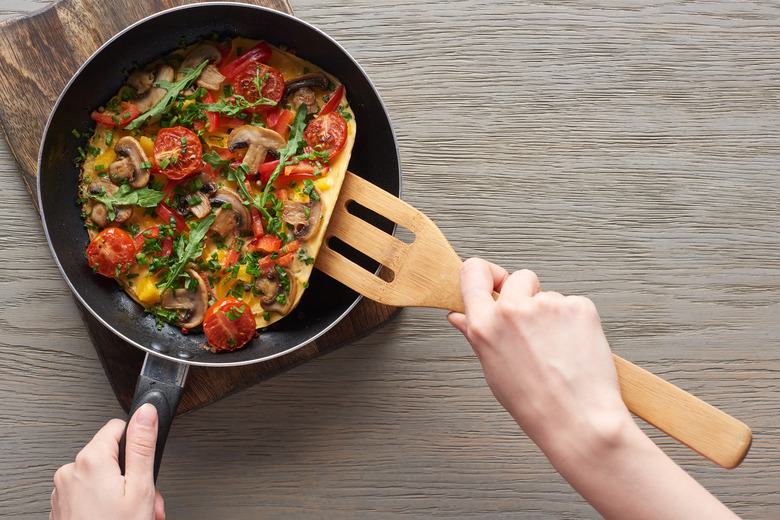How To Season T-Fal Saucepans
From its introduction in 1956, T-fal became the first brand of nonstick cookware to hit the market. The cookware line today includes stovetop saucepans, pots, pressure cookers and even T-fal pan oven-safe cookware, including T-fal titanium oven-safe products. Before you cook with a T-fal saucepan for the first time, you'll need to season it. "Seasoning" doesn't mean applying spices and herbs from your pantry to the cookware; it's the culinary term for applying a thin layer of cooking oil to a heated pan to fill any pores in the nonstick surface and optimize the pan's nonstick qualities.
Seasoning a Pan
Seasoning a Pan
According to the manufacturer of T-fal, owners should wash new T-fal cookware in warm, soapy water before seasoning it. After washing it, thoroughly rinse the cookware and dry it with a paper towel or soft cloth. Heat each pan for 30 seconds on a low setting. Remove the pan from the heat and add 1 tablespoon of vegetable oil to the pan. Using a paper towel, rub the oil over the entire inside of the pan to season it.
If you have ceramic cookware, you can skip the seasoning process because ceramic shouldn't be seasoned. And be sure to check your cookware to see if a protective plastic piece is around the base of the handle. If so, remove and discard it so that it doesn't present a fire hazard when you cook with your T-fal pots and pans.
Cleaning T-fal Cookware
Cleaning T-fal Cookware
Other than seasoning a T-fal pan, there are additional ways to extend the life of your nonstick cookware and maximize its performance, including proper cleaning, cooking and use of cooking utensils.
Even though most kinds of T-fal cookware can be cleaned in a dishwasher, the manufacturer of T-fal recommends washing them by hand in warm, soapy water using a sponge or cloth. Be sure to consult your user manual or packaging directions because some hard anodized nonstick T-fal cookware isn't dishwasher safe.
Abrasive cleaners, scouring pads, steel wool, oven cleaner and scouring powder should be avoided because they can scratch the nonstick surface. You can, however, use a cleaner that's labeled as safe for nonstick surfaces.
Protecting the Nonstick Surface
Protecting the Nonstick Surface
Cooking on high heat may damage T-fal cookware, so a low to medium setting is recommended. The nonstick surface may also be damaged if a saucepan boils dry or you use a pan to flambé food. Choose the proper burner size to the pan you're using by making sure that the heat from the burner only contacts the bottom of the cookware without climbing up the side walls. And be sure to let cookware cool before washing it; otherwise, extreme changes in temperature may warp pots and pans and compromise the nonstick surface.
Utensils for T-fal Cookware
Utensils for T-fal Cookware
To protect the nonstick surface, use plastic or wooden utensils with most types of T-fal nonstick cookware. With T-fal ceramic, stainless steel and tri-ply cookware, you can also use silicone utensils.
Only use metal utensils if you have T-fal titanium, ProGlide, Prometal or Expert cookware. Although you can use most metal utensils on these types of T-fal, avoid using knives, whisks and other utensils that have sharp edges. You can also use metal utensils, except for knives and whisks, on T-fal stainless steel and tri-ply cookware. Note that metal utensils will leave marks on the surfaces of these types of cookware, but the marks won't damage the performance of the pots and pans.
